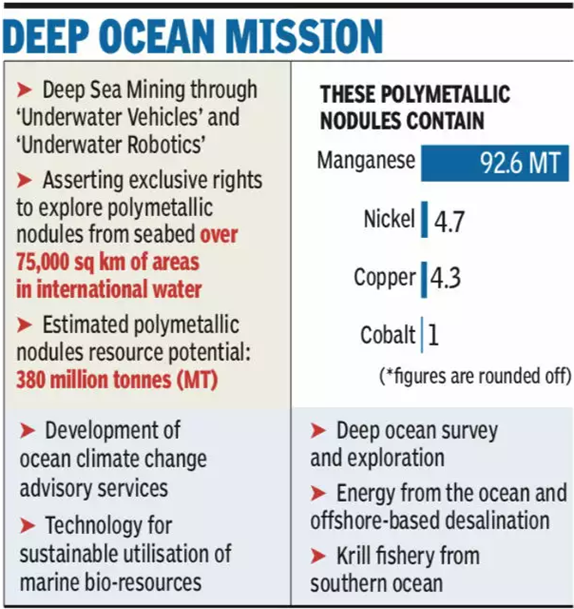Friday, 20th January 2023
Illogical rejection of the idea of South Asia
Exam View: Benefits and Opportunities of Regional Cooperation in South Asia, Issues and Challenges with Regional Cooperation in South Asia.
In News: As per a recent World Bank study on air pollution, about two million people die prematurely in South Asia each year as particulate measure concentrations put nine South Asian cities among the world’s top 10 worst affected by air pollution.
Concentrations of fine particulate matter (PM 2.5) in the region’s most densely populated and poor areas are up to 20 times higher than what WHO considers healthy (5 µg/mᶾ).
South Asia, a subregion of Asia, consists of the Indo-Gangetic Plain and peninsular India. It includes the countries of Bangladesh, Bhutan, India, Pakistan, Nepal, and Sri Lanka. Afghanistan and the Maldives are often considered part of South Asia as well.
India's vision of regional economic integration in South Asia is based on enhanced intra-regional trade, investment flows and regional transport and communication links in South Asia. South Asian Association for Regional Cooperation (SAARC) and India’s Neighbourhood First Policy are the two vehicles in this process.
Benefits and Opportunities of Regional Cooperation in South Asia:
Issues and Challenges with Regional Cooperation in South Asia
- Lack of economic opportunities: It has 40% of the world’s poor. According to the World Bank, 399 million people in the region live under $1.25/day, living in extreme poverty.
- Inter-state disputes are resistant in growth: Pakistan has refused talks with India to its own detriment and now stands to miss out on being part of the South Asia energy grid that is already powering dreams of regional connectivity between Bangladesh, Bhutan, India and Nepal (BBIN grouping), and possibly Sri Lanka.
- Low Inter-Regional Trade: South Asia’s intra-regional trade is the lowest globally, constituting only 5% of the region’s total trade. The current economic integration is just one-third of its potential with an annual estimated gap of 23 billion dollars.
- Political Tensions: Historical conflicts, border disputes, and ongoing political tensions between countries in the region make it difficult to foster cooperation and regional integration.
- South Asia has failed to build a platform regarding the climate crisis: As per a study in Bhutan, the average PM 2.5 concentration from 2018-2020 was three times World Health Organization-prescribed limits. The Maldives Meteorological Service has already warned that visibility had been reduced by 60% due to smog for which it has blamed “winds from the Himalayan foothills”.
- Security Concerns: The region is plagued by various security concerns, including terrorism, extremism, and separatist movements, which can make regional cooperation and integration difficult.
- External Influence in South Asia: Recent Chinese actions and policies in South Asia as well as its maritime neighbours, including Indian Ocean Island nations, have made it necessary for India to take its neighbours very seriously.
- Inefficient Management of Global Supply Chain: South Asia’s international trade integration is lower than the global average, and it is way less integrated into global value chains compared to East Asia. The countries have abysmally low exports due to the low productivity of many countries in this region.
- Economic Disparities: Significant economic disparities between countries in the region make it difficult to establish a level playing field for trade and investment.
Way Forward
- Political stability: In order to strengthen South Asia’s regional identity and growth as a region, it is necessary for all countries in the region to have political stability, a decent economic growth rate and a feeling of mutual benefit.
- Strengthening Existing Associations: Existing associations like the South Asian Association for Regional Cooperation (SAARC) haven’t been able to significantly advance regional cooperation here.
- Delinking domestic sentiments from the economic rationale, and engaging in diplomacy to allay concerns should be the way forward for South Asian countries which do have qualms about the integration.
- Delink PM’s presence at the SAARC summit (next in Pakistan): instead have the President or the Vice-President represent India.
A quid pro quo could even see Pakistan send a replacement for its Prime Minister to the SCO Heads of State summit due to be held in India in June.
- whole of region” approach: The solution to the problems of air pollution lies in a “whole of region” approach. South Asian countries should begin talks between scientists, officials and leaders to create a mechanism for the cooperative management of air pollution.
- Towards Self-Reliant South Asia: Self-reliance of South Asia ranges from offers of freer transit trade through the region, the development of supply and logistic chains, digital data interchange, single-window and digitized clearance systems, risk assessment and minimisation measures, wider use of trade lines of credit (presently abysmally low), denser connectivity, smoother cross-border inspections.
- Countering Terrorism: Countries in the region needs to improve their cooperation on intelligence sharing and law enforcement, in order to more effectively target terrorist networks and disrupt their operations.
In any case, it is necessary for the future to boost South Asian cooperation, and to effectively deal with issues such as health, energy, women’s rights, security, and terrorism.
To reject the idea of a unified South Asia as a region would mean a missed opportunity, with repercussions more direr than those that come from the poisoned air the region breathes today.
https://www.thehindu.com/opinion/lead/the-illogical-rejection-of-the-idea-of-south-asia/article66387979.ece
QUALITY CONTROL ORDERS: BLESSING OR A CURSE
In News
India’s introduction of a series of Quality Control Orders (QCO) to rein in a Chinese import surge and boost exports to western markets is facing objections at the World Trade Organization (WTO) and from domestic manufacturers seeking more time to adjust.
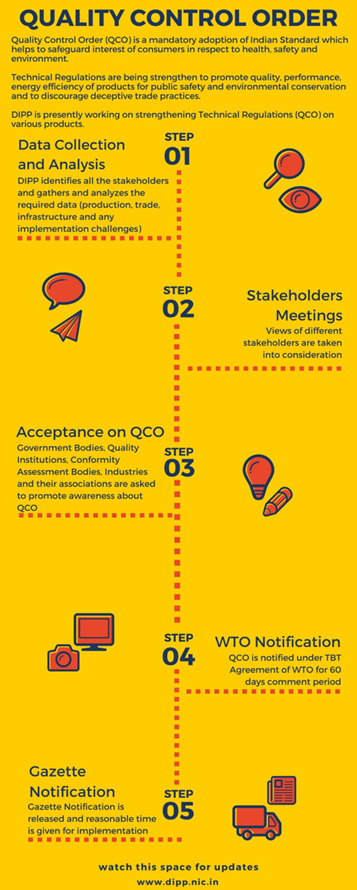 About the News,
About the News,
India has brought a slew of products including toys, machinery safety equipment, pressure cookers, ACs, and chemicals under compulsory certification.
- Objections from WTO
- Technical regulation implemented through QCOs and Compulsory Registration Orders (CRO) should be on the grounds of
- health,
- safety,
- environment,
- deceptive trade practice or
- National security.
- If they are not on these grounds they can be challenged at WTO as being trade restrictive.
- Technical regulation implemented through QCOs and Compulsory Registration Orders (CRO) should be on the grounds of
- Objections from domestic manufacturers
- Implementing the QCO on such short notice could destroy the already-stressed export value chain. As per the Confederation of the Indian Textiles Industry, Government gave only 30 days to the industry to comply with QCO on viscose staple fibers.
- It could lead to
- cancellation of orders
- turning Indian industry unreliable
- Diversion of export orders to competing countries.
- Objections from other bodies
- As per National Accreditation Board for Certification Bodies (NABCB), Regulatory impact assessment (RIA) is lacking. RIA is a formal exercise done by developed nations before coming out with a technical regulation to assess the impact of regulations.
- As per India SME Forum, Quality control has to be a continuous process and not once in a decade knee-jerk reaction
What are QCOs?
- Bureau of Indian Standards (BIS), established by the BIS Act 2016, is the National Standards Body of India. It is engaged in the Standardisation, Conformity Assessment, and Quality Assurance of goods, articles, processes, systems, and services.
- The Central Government, after consulting BIS, publishes QCOs thereby bringing the products under BIS Mandatory Certification.
Why does India need QCOs?
- Curb dumping from China:
- India imports 90% of bulk drugs or APIs from China and allows easy access through a simple registration system without any rule for checking off each consignment at the time of import. Whereas in China, where registration takes one to three years and testing takes place again at the time of imports. And China cancels registration even if one batch has issues.
- Such regulations will act as an anti-dumping
- Safeguard Consumer Interest:
- The Quality Council of India conducted a survey that showed that 67% of toys that were imported were not safe for the children.
- Regulations at par with global standards:
- Every country, be it the US or China, does it. India is behind in terms of quality standards and needs to push for better standards to be part of the global supply chain.

- One Nation, One Standard Mission:
- Creating India as a leader in maintaining global benchmarks for the highest levels of quality standards.
- Zero Effect, Zero Defect products
- Globally competitive Made in India products
- Boost domestic industries:
- By opening up new global markets with high quality products, domestic industries can recover from post-COVID slump.
Source:
https://www.livemint.com/news/india/new-quality-control-norms-face-pushback-from-wto-members-domestic-industry-11674063456230.html
Changes to Insolvency Law in India
In news
The government has proposed more than 40 amendments to the Insolvency and Bankruptcy Code (IBC), which came into force in 2016, and has invited public comments on these changes.
About IBC
- Insolvency and Bankruptcy Code 2016 was implemented through an act of Parliament.
- The law was necessitated due to a huge pile-up of non-performing loans of banks and delay in debt resolution.
- IBC applies to companies, partnerships and individuals, and provides for a time-bound process to resolve insolvency.
- Timeframe under the code
- Companies have to complete the entire insolvency exercise within 180 days under IBC.
- For smaller companies, the whole exercise of insolvency must be completed in 90 days.
- If debt resolution doesn't happen, then the company goes for liquidation.
- The Insolvency and Bankruptcy Board of India has been appointed as a regulator and it can oversee these proceedings.
- Proceedings of the resolution process will be adjudicated by National Companies Law Tribunal (NCLT) for companies, and Debt Recovery Tribunals for Individuals.


Challenges associated with IBC
- Time limit: The proportions of NCLT benches to the high range of cases are unbalanced and time under code is troublesome, and this gets even more difficult when one company has many creditors.
- Lack of sufficient infrastructure: The lack of sufficient NCLT benches has resulted in increasing pendency, thereby defeating the purpose of the code.
- Frequent amendments: The difficulty in interpreting the code, has led to frequent amendments and judgements by the court, thereby hamperthe ing smooth flow of processes.
Proposed changes
- To strengthen the functioning of the IBC, changes to the Code are being considered in relation to the admission of corporate insolvency resolution process (CIRP) applications, streamlining the insolvency resolution process, recasting the liquidation process, and the role of service providers under the Code.
- the corporate affairs ministry has suggested developing a state-of-the-art electronic platform that can handle several processes under the Code with minimum human interface.
- Redesigning the Fast-Track Corporate Insolvency Resolution Process (FIRP) to allow financial creditors to drive the insolvency resolution process outside of the judicial process while retaining some involvement of the Adjudicating Authority (AA) to improve the legal certainty of the final outcome.
- Other proposals include:
- Extend pre-packaged insolvency processes to larger companies
- Tighten recovery from personal guarantors and make failures to comply with the bankruptcy code civil violations rather than criminal offences.
Source:
Govt proposes sweeping overhaul to its bankruptcy law
Image source
https://www.ijedr.org/papers/IJEDR1903007.pdf
https://www.legalindia.com/wp-content/uploads/2018/10/Image-of-Insolvency-and-Bankruptcy-Code-2016.png
4th Industrial Revolution for India
In News:
- Economists analyses the critical importance of Fourth industrial revolution for India
About the News:
- The Centre for the Fourth Industrial Revolution for India was established in Mumbai after its announcement at the World Economic Forum Annual Meeting in Davos, 2018.
- It has been developed in partnership with National Institution for Transforming India (NITI) Aayog to serve as a platform for technology governance in the Indian context.
- The role of technology is significant in India, which is resource crunched, and the country is fast adopting 4IR technologies.
- Success examples of vaccination programs and the built up digital healthcare ecosystem signifies the potential of IR 4.0 technologies for India..
- However, economists have raised apprehensions considering several foundational challenges including resource and infrastructure crunches to fully realise its potential.
Centre for the Fourth Industrial Revolution in India (C4IR):
About: The Centre for the Fourth Industrial Revolution in India (C4IR) was established in October 2018 to focus on the role of emerging technologies across different sectors.
Important features:
- It works on three pillars: 4IR technologies such as AI, IoT, blockchain, public-private cooperation, and multi-stakeholder partnership.
- It works closely with several Union Ministries and state governments, and have signed MoUs with the Telangana and Karnataka governments, and talks are underway with the Arunachal Pradesh government.
- India has a well-thought-out ecosystem of data, and C4IR is working to develop data platforms such as UPI and Aadhaar, and upcoming platforms such as the one on logistics announced in the budget.
- It is building skills and capacity in India, which has a substantial young population and an education system capable of producing the required skill sets.
- It is working to make technologies in various industries more ethical and responsible through a centre on the internet of ethical things in partnership with the Karnataka government.
What is the 4th Industrial Revolution (IR)?
- The 4th industrial revolution, also known as Industry 4.0, represents a new era of technological advancement that is characterised by the integration of advanced digital, mechanical, and biological technologies.
- These technologies enable the creation of smart factories and smart cities, where machines and devices are connected and communicate with each other in real-time to optimise production processes and improve efficiency.
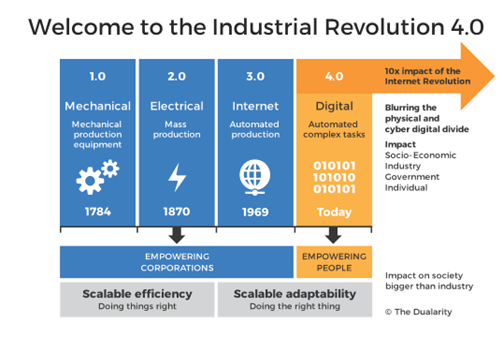
Major components of Industry 4.0:
- Internet of Things (IoT)
- Artificial Intelligence (AI)
- Big Data
- Cloud Computing
- Cybersecurity
- Robotics and Automation
- 3D Printing
- Blockchain technology
- Augmented Reality (AR) and Virtual Reality (VR)
- 5G and Edge Computing.
|
Advantages of IR 4.0 |
Challenges of IR 4.0 |
|
|
https://www.downtoearth.org.in/news/science-technology/fourth-industrial-revolution-4ir-critical-for-india--84878
Impacts of Human Disturbance on Wildlife
Context: A new scientific study suggests that human disturbance can squeeze animals closer together, increasing the odds that they bump into each other.
About the study
- The study was published in the National Academy of Sciences (NAS) journal.
- The findings of the study were based on 4years of data from more than 2,000 wildlife cameras installed across fields, farms, and forests of Wisconsin, USA.
Key findings of the study
|
Key Terms Ecosystem
Ecological niche
|
- Interspecies encounters: Human disturbance compresses the spatiotemporal niche of wildlife, leading to more interspecies encounters.
- Species interactions: Landscape changes induced by human activities may disrupt invisible facets of biodiversity such as species interactions.
- This include effects such as making it harder for prey to evade predators, intensifying competition for resources or increasing the risk of interspecies disease transmission, the researchers say.
- Changes in ecosystem functions: Human disturbances can change the interactions between species, which can alter the way an ecosystem functions.
- For example, changes in predator-prey relationships can affect the way energy flows through an ecosystem.
What other ways can human disturbance affect wildlife?
- Habitat loss: Human activities such as logging, farming, urbanization, and mining can lead to habitat loss, making it difficult or impossible for animals to survive in those areas.

- Introduction of invasive species: Human activities such as transportation and trade can lead to the introduction of invasive species into new areas, which can outcompete and displace native wildlife.
- Pollution: Human-generated pollution, such as chemical spills, industrial waste, and plastic debris, can contaminate habitats and make it difficult or impossible for animals to survive.
- Climate change: Human activities such as burning fossil fuels and deforestation can contribute to climate change, which can alter habitats and disrupt the routines of animals.
- Noise pollution: Human activities such as construction, transportation and industrial activity can generate excessive noise, which can disrupt the communication and mating patterns of animals.
- Light pollution: Artificial light at night from human activities can interfere with the natural light cycle of animals, disrupting their feeding, migration and breeding patterns.
- Human interference: Direct human interference such as hunting, poaching, and fishing can disrupt the routines of animals and can cause direct harm.
Source:
https://indianexpress.com/article/explained/explained-climate/how-can-human-disturbance-alter-habitats-and-routines-of-animals-8387711/
https://www.pnas.org/doi/10.1073/pnas.2206339119
European Green Deal - Edukemy Current Affairs
In News: The European Commission president has announced a plan to boost subsidies and tax breaks for clean-tech companies in the face of US and Chinese competition.
About European Green Deal
- The European Commission's 'European Green Deal' is a roadmap for making the EU's economy sustainable by turning climate and environmental challenges into opportunities across all policy areas and making the transition just and inclusive for all.
- It provides a roadmap with actions to boost the efficient use of resources by moving to a clean, circular economy and stop climate change, revert biodiversity loss and cut pollution.
- Also, It outlines investments needed and financing tools available, and explains how to ensure a just and inclusive transition.
- The deal covers all sectors of the economy, notably transport, energy, agriculture, buildings, and industries such as steel, cement, ICT, textiles and chemicals.

Source:
EU unveils green industrial plan to counter US and Chinese competition
Image source:
https://eur-lex.europa.eu/legal-content/EN/TXT/HTML/?uri=CELEX:52019DC0640&from=ET
National Export cooperative society
In News: Union Cabinet approves establishment of pan-India Export Co-operative Society
About
- The National Export cooperative society was approved by the Union Cabinet in 2023 to enhance the scale and volume of exports for cooperatives.
- The first few products that are expected to be exported by the Society are nano fertilisers produced by IFFCO and dairy products from Amul.
- National Cooperative Development Corporation (NCDC) together with leading cooperatives such as Indian Farmers Fertiliser Cooperative Limited (IFFCO), National Agricultural Cooperative Marketing Federation of India (NAFED) and Amul and will be the promoters of the Society and contribute ₹100 crore each
- The society will have an authorised share capital of ₹2,000 crore with the area of operation all over the country, and will have its registered office in Delhi.
- The Society will benefit small farmers or artisans who have a good product but do not have access to the right platform, giving them access to the international market and good returns.
- It will provide end-to-end services to the cooperatives, including opening foreign bank accounts, completing formalities and necessary permissions for exporting a product and instant dividends will be shared with the manufacturer without any brokerage fee.
- The Society will work as an export house for handicrafts, handlooms, khadi, and other products, ensuring the enhancement of income of the cooperative member entrepreneurs.
https://www.thehindu.com/news/national/national-export-co-operative-society-to-export-farm-non-farming-products-in-three-months/article66408776.ece
Yangtze finless porpoise - Edukemy Current Affairs
In News: Yangtze finless porpoise has returned to Dongting Lake after a ban on sand mining. 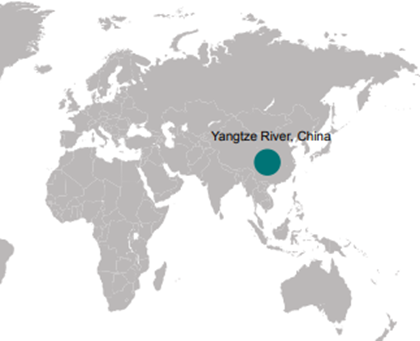 About
About
- Porpoises are part of a group of marine mammals called cetaceans, which includes all whales and dolphins
- It is the only freshwater porpoise in the world and breeds just once in 18 months.
- Yangtze finless has a level of intelligence similar to that of a gorilla.
- These are very small compared to whales but move with high speed.
- These are good indicators of the health of their ecosystem, hence called keystone species.
Threats
- Overfishing increased shipping traffic, and noise pollution have all been linked with the decline of the porpoise.
- Sand mining is also a potential threat.
Habitat
- Finless porpoises live in the Yangtze River in China, where they can be found in the main river channel and:
- Poyang and Dongting: two large lakes
- Tien Ezhou and He Wang Miao: two ox-bow lakes
Conservation status
- IUCN Red List: Critically endangered
Sources:
https://www.wwf.org.uk/sites/default/files/2018-01/WWF_WiW_2017_Factsheet_Yangtze%20Finless%20Porpoise%20FINAL.pdf
https://www.downtoearth.org.in/news/wildlife-biodiversity/critically-endangered-yangtze-finless-porpoise-return-to-lost-lake-stretches-after-sand-mining-ban-report-8719
Hybrid Immunity - Edukemy Current Affairs
In News: A recent study in the journal The Lancet Infectious Diseases made observations on “hybrid immunity.”
 About
About
- Hybrid immunity is defined as the immune protection in individuals who have had one or more doses of a COVID-19 vaccine and experienced at least one SARS-CoV-2 infection before or after the initiation of vaccination
- In simple words, hybrid immunity is gained from a previous infection plus vaccines – either the primary doses or both primary and booster doses.
- Hybrid immunity offers a “higher magnitude and durability” of protection as compared to infection alone, emphasising the need for vaccination.
Key Findings
- Protection against severe disease and hospitalisations from a Sars-CoV-2 infection alone was found to be 82.5% at three months after the last shot or infection.
- This protection stood at 74.6% at 12 months and 71.6% at 15 months. Protection against reinfection declined faster, standing at 65.2% at three months and dropping to 24.7% at 12 months and 15.5% at 15 months.
- In comparison, hybrid immunity with just the primary vaccine doses was found to be 96% at three months and 97.4% at 12 months. The same can offer 69% protection against reinfection at three months, dropping to 41.8% at 12 months.
Other Types of Immunities
|
Infection-induced immunity |
Vaccine-induced immunity |
|
It is defined as the immune protection in an unvaccinated individual after one or more SARS-CoV-2 infections. |
It is acquired through the introduction of a killed or weakened form of the disease organism through vaccination. |
Sources
https://indianexpress.com/article/explained/explained-health/hybrid-immunity-most-effective-against-severe-covid-study-8392858/
https://www.who.int/news/item/01-06-2022-interim-statement-on-hybrid-immunity-and-increasing-population-seroprevalence-rates
Biosensing-based EDC Detection System
Why in news? Recently, The Secretary, MeitY has launched Technology for Biosensing system for the detection of Endocrine Disrupting Chemicals in aquatic ecosystems.
About:
- The Centre for Development of Advanced Computing (C-DAC), Kolkata in collaboration with ICAR-CIFRI, Barrackpore under the ‘National programme on Electronics and ICT applications in Agriculture and Environment (AgriEnIcs)’ has developed the technology.
- The Biosensing based EDC detection system (MEAN), was also transferred to the Arogyam Medisoft Solution Private Limited for further commercialization of the same technology.
Endocrine-disrupting chemicals (EDCs)
- EDCs are substances in the environment (air, soil, or water supply), food sources, personal care products, and manufactured products that interfere with the normal function of your body’s endocrine system.
https://pib.gov.in/PressReleasePage.aspx?PRID=1892004
PARAKH - Edukemy Current Affairs
Why in news? Recently, National Council for Education Research and Training (NCERT) has notified India’s first national assessment regulator, PARAKH.
 About:
About:
- PARAKH was launched under the National Education Policy (NEP), 2020 the by Ministry of Education.
- It facilitates a platform for students to self-assessment of learning outcomes and 21st-century life skills acquired by students.
- It works on setting norms, standards, and guidelines for student assessment and evaluation for all recognized school boards in the country.
- Assessment guidelines will help in removing disparities in scores of students enrolled with different state boards.
https://www.hindustantimes.com/india-news/ncert-notifies-india-s-first-national-assessment-regulator-101673804632477.html
Bharat Pravah - Edukemy Current Affairs
Why in news? Recently, Union Minister of Shipping, Waterways and Ports launched an initiative 'Bharat Pravah - India along its Shores'.

About:
- It will serve as a common platform to bring together stakeholders from different walks for the purpose of creating a larger vision of shipping, rivers, seas & people.
- The initiative aims to highlight the importance of rivers-ports-shipping in the everyday life of the common man through literature, dialogue, and communication.
- They are part of economic activities, rituals, and religious texts, connecting people and their hearts across India such as Dwarka in the West, Guwahati in East, Varanasi in North or Rameswaram in the South.
- The initiative plans to organize a series of regional, national and international events throughout the year around 8 themes.
https://economictimes.indiatimes.com/industry/transportation/shipping-/-transport/sonowal-launches-bharat-pravah-to-highlight-role-of-rivers-ports-shipping/articleshow/97093752.cms
Cyborgs - Edukemy Current Affairs
Why in news? Recently, oncologist and author Siddhartha Mukherjee said we are creating people who, in some old technologies, will be called cyborgs.

About:
- It is a shorter version of cybernetic organism. It is part human part machinee, biological and technology.
- It is the application of the idea that the evolution of humans won’t be a function of natural selection.
- Cyborg can be considered as a real version of technological advancement that was once considered as fiction.
- The scientists described a cyborg as a man-machine system in which the control mechanisms of the human portion are modified externally by drugs or any other device.
https://indianexpress.com/article/india/we-are-creating-people-who-in-old-technologies-will-be-called-cyborgs-siddhartha-mukherjee-8388186/
Atomic Hydrogen and GMRT - Edukemy Current Affairs
Why in news? The Giant Metrewave Radio Telescope (GMRT) which is located in India’s Pune, has detected a radio signal originating from an extremely distant galaxy.

About:
- Atomic hydrogen is the basic fuel required for star formation in a galaxy.
- When hot ionized gas from the surrounding medium of a galaxy falls onto the universe, the gas cools and forms atomic hydrogen.
- This atomic hydrogen then becomes molecular hydrogen and eventually leads to the formation of stars.
- Atomic hydrogen emits radio waves of 21 cm wavelength, which helps in the direct tracing of the atomic gas content in nearby and distant galaxies.
Giant Metrewave Radio Telescope (GMRT)
- It is a low-frequency radio telescope that helps investigate various radio astrophysical problems ranging from nearby solar systems to the edge of the observable universe.
- It is operated by the National Centre for Radio Astrophysics (NCRA), a part of the Tata Institute of Fundamental Research, Mumbai.
https://www.wionews.com/science/india-based-telescope-detects-faint-radio-signal-from-an-extremely-distant-galaxy-553716/amp
Duty drawback scheme - Edukemy Current Affairs
Why in news? According to GST authorities, Exporters are misusing the government’s duty drawback scheme.
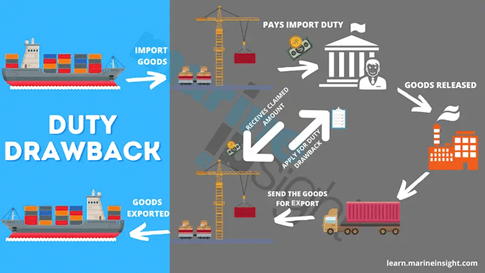
About:
- Under this scheme, exporters are provided with a refund of customs duty paid on unused imported goods, or goods that will be treated, processed or incorporated into other goods for export.
- Claims must be lodged within 4 years from the date the goods were exported.
- Duty drawback can be only claimed for compensating unrebated taxes and duties, not for GST.
https://www.business-standard.com/article/economy-policy/apparel-drugs-and-leather-export-under-scanner-for-tax-scheme-misuse-123011500726_1.html
REWARDING GOOD GOVERNANCE - Edukemy Current Affairs
Background
In the 1992 report entitled “Governance and Development”, the World Bank defined Good Governance as “the manner in which power is exercised in the management of a country’s economic and social resources for development”. Indian Express Excellence in Governance Award is presented to Civil servants for their contribution to good governance at the grassroots level.
About
- The Excellence in Governance Award is given across categories such as Agriculture, Disaster Management, E-Governance, Energy, Gender and Inclusion, Healthcare, etc.
- Excellence in governance in ‘Agriculture’:
- Vishal Singh was declared the best district magistrate.
- He successfully implemented a micro-irrigation project in six remote villages in Malkangiri district, affected by the Maoist menace.
- The project, benefitted more than 300 farmers who are now able to grow a second crop and increase their household income by 60 percent.
- Excellence in governance in ‘Gender and Inclusion’:
- Chanchal Rana won the award for the best district magistrate.
- He successfully implemented the Sweekruti Scheme which aims to offer dignity, inclusion, and livelihood to the transgender community and make all social security schemes accessible to them.
- Excellence in governance in ‘Healthcare’:
- Krishnanunni H, District Collector of Erode in Tamil Nadu, won the award
- He connected a remote tribal hamlet to the nearest healthcare facility using a 5 GHz wireless system. He started a telehealth facility at a school in the hamlet using 100 Mbps uninterrupted WiFi.

Source:
https://odishabytes.com/odisha-collectors-vishal-singh-chanchal-rana-awarded-for-excellence-in-governance/
Share the article
Get Latest Updates on Offers, Event dates, and free Mentorship sessions.

Get in touch with our Expert Academic Counsellors 👋
FAQs
UPSC Daily Current Affairs focuses on learning current events on a daily basis. An aspirant needs to study regular and updated information about current events, news, and relevant topics that are important for UPSC aspirants. It covers national and international affairs, government policies, socio-economic issues, science and technology advancements, and more.
UPSC Daily Current Affairs provides aspirants with a concise and comprehensive overview of the latest happenings and developments across various fields. It helps aspirants stay updated with current affairs and provides them with valuable insights and analysis, which are essential for answering questions in the UPSC examinations. It enhances their knowledge, analytical skills, and ability to connect current affairs with the UPSC syllabus.
UPSC Daily Current Affairs covers a wide range of topics, including politics, economics, science and technology, environment, social issues, governance, international relations, and more. It offers news summaries, in-depth analyses, editorials, opinion pieces, and relevant study materials. It also provides practice questions and quizzes to help aspirants test their understanding of current affairs.
Edukemy's UPSC Daily Current Affairs can be accessed through:
- UPSC Daily Current Affairs can be accessed through Current Affairs tab at the top of the Main Page of Edukemy.
- Edukemy Mobile app: The Daily Current Affairs can also be access through Edukemy Mobile App.
- Social media: Follow Edukemy’s official social media accounts or pages that provide UPSC Daily Current Affairs updates, including Facebook, Twitter, or Telegram channels.




